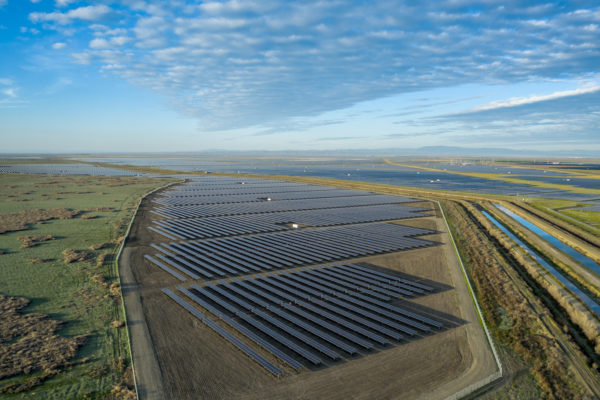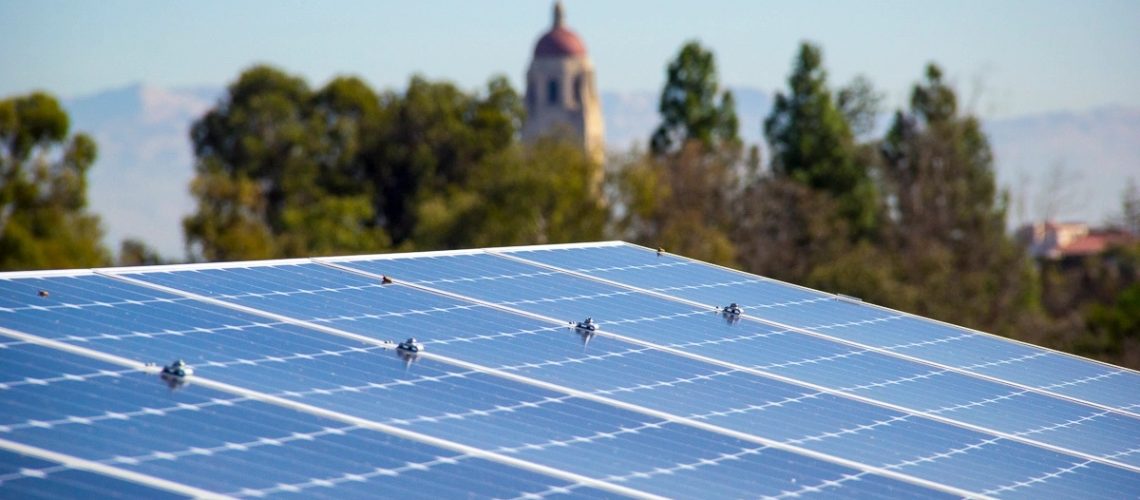The solar generating station that came online this week will bring Stanford to an 80% reduction in campus greenhouse gas emissions as part of a complete overhaul of the university’s entire energy system, and it brings the university to 100% renewable electricity.
Stanford’s Solar Installations
The 67MW Stanford Solar Generating Station #1, located in Rosamond, CA, came online in 2016.

5MW was installed on rooftops on campus in 2017. And the Stanford Solar Generating Station #2, which came online this week, is an 88MW array constructed near Lemoore, CA, through a power purchase agreement with Recurrent Energy.
Stanford embarked on this path in the 1980s, when the university implemented net metering on its facilities for the purpose of understanding how and where energy was being used, and in 2009 the university released its long-range Energy and Climate Action plan. That plan is now in its third edition and includes high-efficiency standards for new buildings, continued efficiency improvements for existing buildings, and the cutting-edge energy supply system known as the Stanford Energy System Innovations (SESI) project.
SESI moved the university from a 100% fossil-fuel-based combined heat and power plant to grid-sourced electricity and a more efficient electric heat recovery system. SESI uses the technology roadmap for building heating and cooling recommended by the International Energy Agency, which the United Nations Environment Programme also recently discussed in a comprehensive report for district-level implementation.
Stanford was recognized in 2021 as one of only eleven US universities to achieve the Platinum rating and is the top-ranked doctoral university in the Energy category in the Association for the Advancement of Sustainability in Higher Education’s (AASHE) 2021 Sustainable Campus Index. And Stanford has taken further steps as it transitions to clean energy. It was the first US college or university to issue bonds carrying dual climate and sustainability designations for financing campus construction and renovation projects in 2021 ($375 million). And the school has a goal of zero waste by 2030 (defined as 90% diversion of waste away from the landfill). The current diversion rate is approximately 67% of which waste is composted, re-used, or recycled. In addition, Stanford has implemented a water conservation plan that reduced total campus potable water use by 48% since the program began in 2001.



